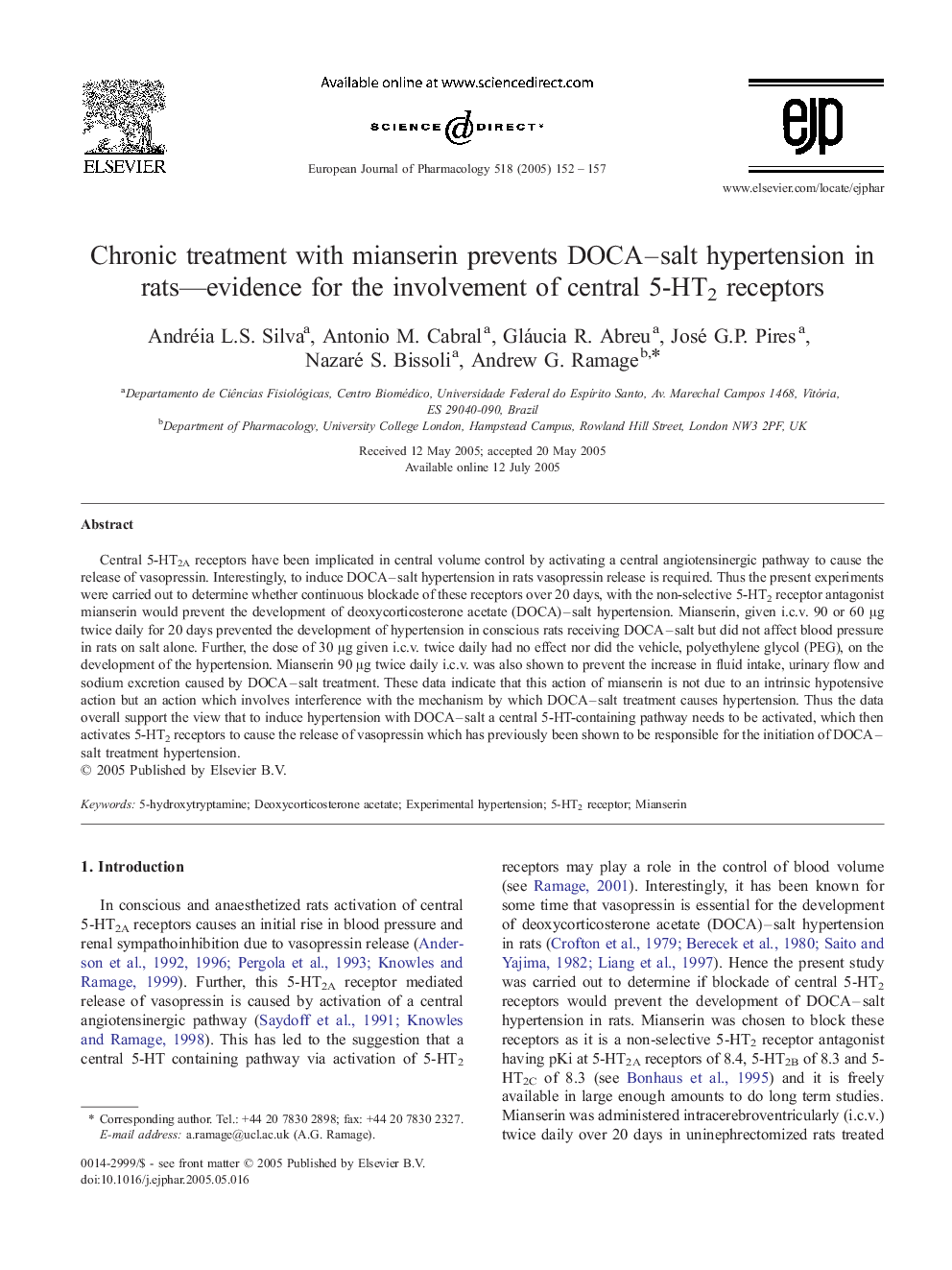| Article ID | Journal | Published Year | Pages | File Type |
|---|---|---|---|---|
| 9921187 | European Journal of Pharmacology | 2005 | 6 Pages |
Abstract
Central 5-HT2A receptors have been implicated in central volume control by activating a central angiotensinergic pathway to cause the release of vasopressin. Interestingly, to induce DOCA-salt hypertension in rats vasopressin release is required. Thus the present experiments were carried out to determine whether continuous blockade of these receptors over 20 days, with the non-selective 5-HT2 receptor antagonist mianserin would prevent the development of deoxycorticosterone acetate (DOCA)-salt hypertension. Mianserin, given i.c.v. 90 or 60 μg twice daily for 20 days prevented the development of hypertension in conscious rats receiving DOCA-salt but did not affect blood pressure in rats on salt alone. Further, the dose of 30 μg given i.c.v. twice daily had no effect nor did the vehicle, polyethylene glycol (PEG), on the development of the hypertension. Mianserin 90 μg twice daily i.c.v. was also shown to prevent the increase in fluid intake, urinary flow and sodium excretion caused by DOCA-salt treatment. These data indicate that this action of mianserin is not due to an intrinsic hypotensive action but an action which involves interference with the mechanism by which DOCA-salt treatment causes hypertension. Thus the data overall support the view that to induce hypertension with DOCA-salt a central 5-HT-containing pathway needs to be activated, which then activates 5-HT2 receptors to cause the release of vasopressin which has previously been shown to be responsible for the initiation of DOCA-salt treatment hypertension.
Keywords
Related Topics
Life Sciences
Neuroscience
Cellular and Molecular Neuroscience
Authors
Andréia L.S. Silva, Antonio M. Cabral, Gláucia R. Abreu, José G.P. Pires, Nazaré S. Bissoli, Andrew G. Ramage,
